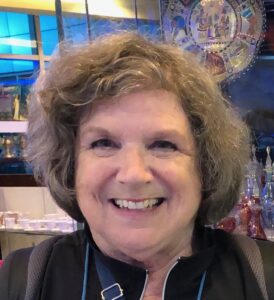Although we’re not currently offering docent tours in person, many of our docents are graciously conducting “virtual tours,” showing us digitally some of their favorite works. Sandra Loman taught history courses at Madison College for over 30 years and used both art and architecture extensively in her curriculum. She’s been a docent since 2004. We asked her a few questions about some favorites at the Chazen.
When you’re conducting a tour of the permanent galleries, which pieces do you always show your guests?
I usually stop in the African gallery as well as other places in the museum where we have works by African artists, such as El Anatsui.
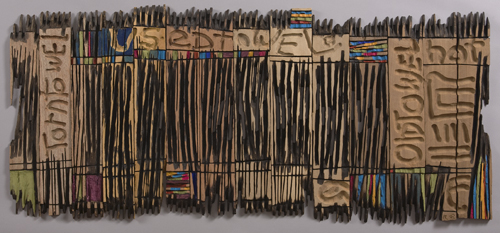
El Anatsui, (Ghanaian, active in Nigeria, b. 1944), Old Used Torn Towel, ca. 2003, African hard woods, pigment, 24 x 54 x 1 in., J. David and Laura Seefried Horsfall Endowment Fund purchase 2005.58a-n
I also show Boudin’s painting of Étretat and the nearby, smaller painting by Maximilien Luce.
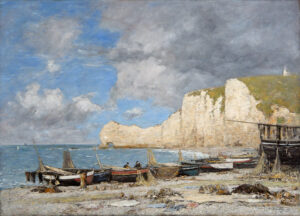
Eugene-Louis Boudin, (French, 1824-1898), Étretat, 1891, Oil on canvas, 30 15/16 x 43 7/16 in., Gift of Mrs. Frank P. Hixon, 70.24
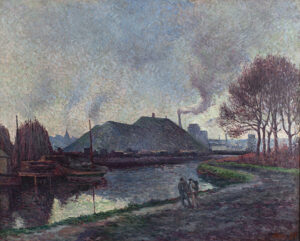
Maximilien Luce, (French, 1858-1941), The River Sambre at Charleroi (La Sambre à Charleroi), 1896, Oil on canvas, 25 3/4 x 32 in., Elvehjem Museum of Art General Endowment Fund purchase, 1982.4
I also take people to see Marilyn Monroe by Andy Warhol and the nearby silkscreen of Rouen Cathedral by Roy Lichtenstein.

Andy Warhol, (American, 1928-1987), Marilyn Monroe, 1967, Screen print, 37 1/2 x 37 1/2 in., Robert Gale Doyon Fund and Harold F. Bishop Fund purchase, 1978.252
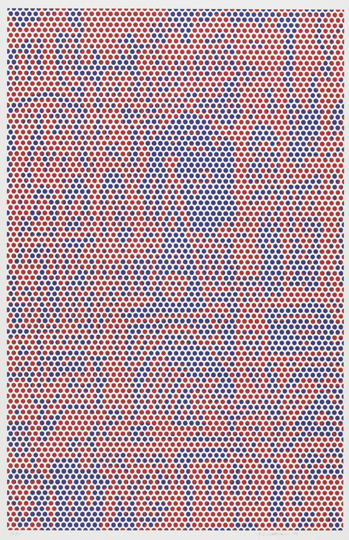
Roy Lichtenstein, (American, 1923-1997), Rouen Cathedral 4, 1969, Color lithograph, 41 3/4 x 27 in., Anonymous Fund purchase, 1974.39
Why do you include these particular pieces in your tours?
I have chosen these pieces along with a few others because these are places that I have visited, and I have also seen other works by these artists in other museums. I collect photos/postcards of those works to show people when looking at the Chazen pieces. I also photograph locations which some paintings portray, such as Étretat and Rouen Cathedral. I often use works by other artists of those same locations, such as Monet for both Étretat and Rouen.
What do you usually tell guests about these pieces?
I try to involve them in looking closely at the paintings or prints and have them explain what they are seeing. Using photos of locations or people or works by other artists, I then ask guests to compare the pieces with these.
Stories about the place or person and about the artist’s life also help illuminate the piece. I don’t so much “tell” but ask questions about what they see — for example, standing close to the Lichtenstein and standing back from it reveals so much about form and technique and how we see things. My personal experiences provide another perspective for the guests and opens an avenue for them to share their experiences with places or people. Sometimes I have people tell stories about what they are seeing and that’s both enjoyable and revealing.
How do guests typically react to your must-sees?
It really depends on the age of the group. Moving back and forth from the Lichtenstein is great for K-12 groups. They like the notion of looking at things from different angles. Sharing my personal stories and showing objects from Africa creates a sense of connection with a place unfamiliar to many people. I think most guests like going more deeply into a piece they may not like at first or understand. Surprise is also a common response, as in, “wow, I would never have guessed that or thought about it that way.” This is especially true for contemporary pieces or more abstract works of art.
Is there anything you’d like to say to readers in this difficult time about art and the solace it can provide, or about the Chazen in general?
The Chazen is wonderful because it offers so many experiences for people. It offers challenging works that take you out of your comfort zone, as well as pieces you like to come back to because there’s something pleasing and familiar about them.
In this difficult time, it offers an opportunity for stimulation and escape, for contemplation of something other than the current state of affairs. The works on display also express so many different feelings about life and art and humanity that you can find something that helps take you beyond yourself and your world, or allows you to find an artist whose work expresses feeling similar to your own.
